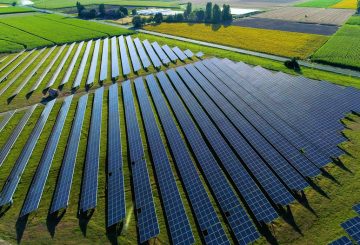Kiwirail đã bảo đảm một cơ sở cho vay trị giá 350 triệu USD để tài trợ cho việc mua hai bến phà liên đảo mới. Khoản vay này là khoản vay đầu tiên trên thế giới được chứng nhận bởi Sáng kiến Bond Khí hậu.
Sáng kiến Bond Khí hậu là một đề án toàn cầu sử dụng các tiêu chí khoa học khắt khe để xác định liệu các khoản vay và các khoản nợ khác có phù hợp với các mục tiêu của Hiệp định Khí hậu Paris hay không.
Để đạt được chứng nhận, Kiwirail đã chứng minh một con đường rõ ràng để đạt được không khí thải carbon vào năm 2050.
“Những chiếc phà này đang tiến bộ 50 năm về công nghệ. Chúng tôi đang đi từ những chiếc phà đã có tuổi đời hơn 20 năm, đến những chiếc phà hiện đại, được chứng minh trong tương lai sẽ kéo dài 30 năm, và việc giảm phát thải cacbon đã là một phần quan trọng trong thiết kế,” ông Greg Miller, Giám đốc điều hành Tập đoàn Kiwirail nói.
Các phà mới sẽ giảm 40% lượng khí thải carbon so với các phà hiện tại bằng cách sử dụng kết hợp động cơ diesel, pin và điện trên bờ. Ngoài ra, chúng còn được thiết kế để cho phép tăng sử dụng pin theo thời gian, với ý tưởng rằng chúng có thể chạy hoàn toàn bằng điện trong tương lai. Thiết kế này cũng cho phép sử dụng các nguồn nhiên liệu carbon thấp thay thế khi chúng trở nên có sẵn trên thương mại.
Giám đốc điều hành Climate Bonds Initiative Sean Thận hoan nghênh chứng nhận cho vay.
“Việc khử cacbon vận tải nhanh chóng là rất quan trọng đối với việc giảm khí thải, với vận tải là một phần quan trọng của ngành. Chứng nhận vận chuyển đầu tiên trên thế giới của Kiwirail và các đối tác của họ đánh dấu việc áp dụng thực tiễn quốc tế tốt nhất cho tài chính xanh và họ sẽ được chúc mừng.”
Các phà mới đang được xây dựng bởi nhà máy đóng tàu Hyundai Mipo Dockyard của Hàn Quốc. Người đầu tiên đến vào năm 2025 và lần thứ hai vào năm 2026.





























































